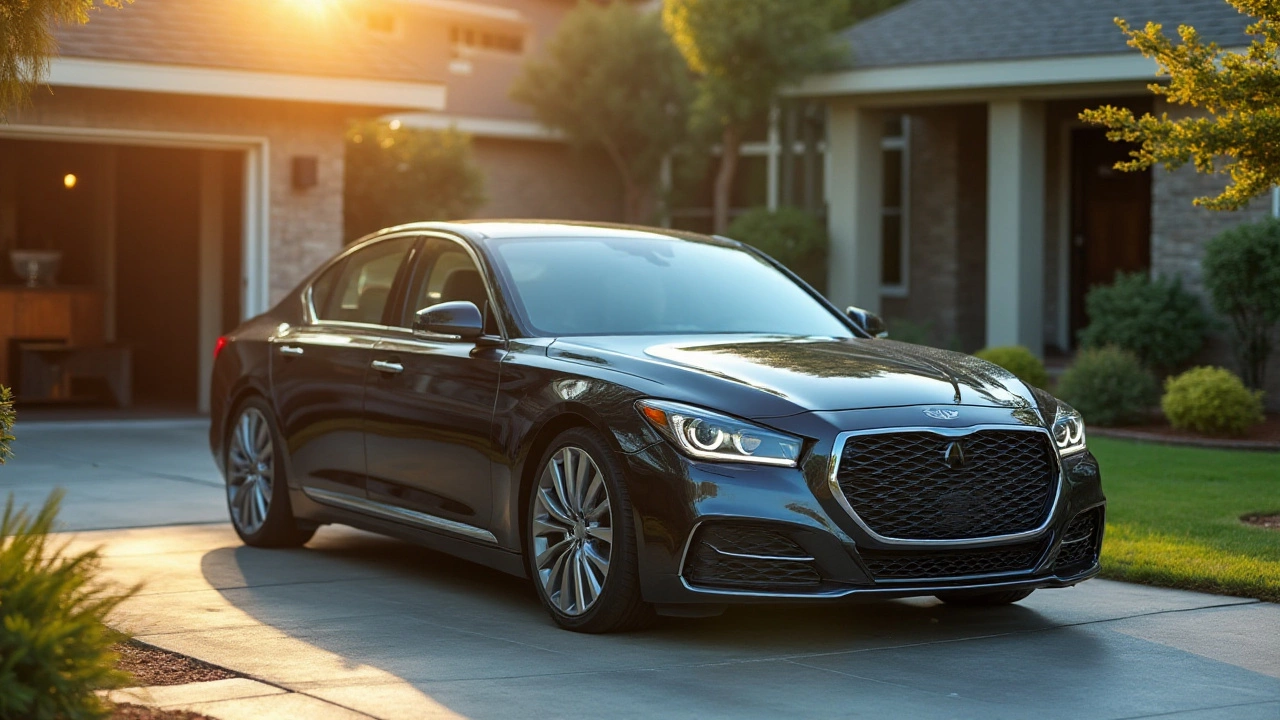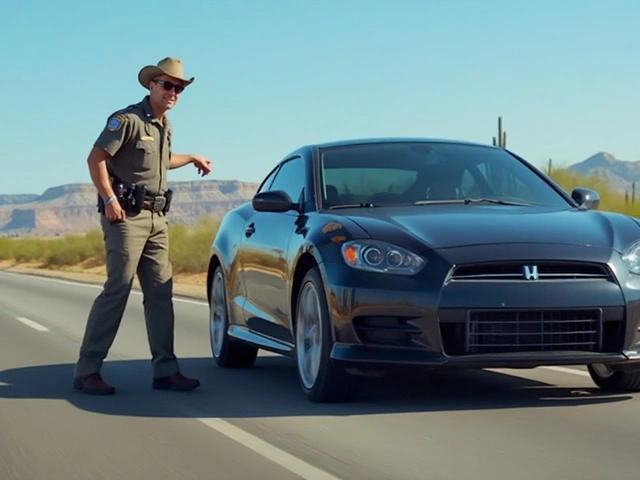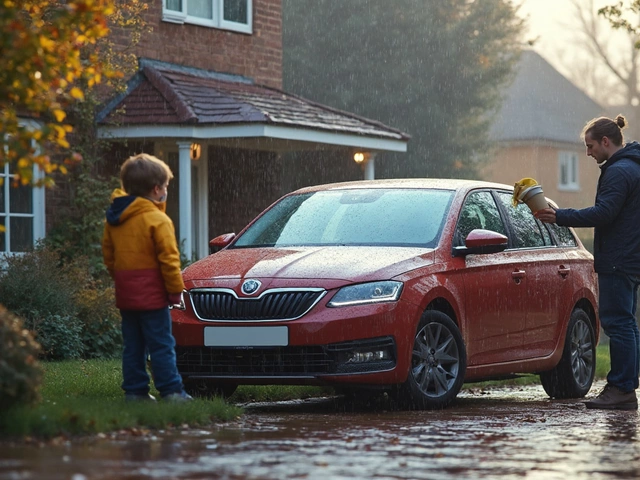When it comes to tinting your vehicle's windows in Texas, knowing the legal limits is crucial. Not only do these laws play a role in road safety, but they also ensure that drivers can enjoy the benefits of window tinting without risking hefty fines.
Texas, with its relentless sun, makes window tinting almost a necessity for many. But, as with most things, there are rules to follow. This aim here is to delve into what the current legal limits are, why they're put in place, and how you can go about selecting the right tint level while staying on the right side of the law.
The goal is to arm you with knowledge, so you can hit the road confidently, enjoying the privacy and protection that window film offers without any unwanted stops by the local law enforcement.
- Texas Window Tinting Laws Explained
- Why Tinting Laws Matter
- Choosing the Right Tint for Your Needs
- Tips for a Successful Tinting Experience
Texas Window Tinting Laws Explained
In the vast landscape of the Lone Star State, where the sun blazes with an unrelenting intensity, window tinting is not merely an aesthetic choice—it’s often a practical necessity. However, before you rush to darken those windows, it's essential to grasp the legal restrictions that come with it. Texas, like many other states, has specific laws governing the amount of light that can pass through your car windows, known as Visible Light Transmission (VLT) percentage. For instance, the law dictates that the front side windows must allow more than 25% of light in, which ensures that law enforcement can see the driver's movements clearly.
Diving deeper into the legislative nuances, it's interesting to note that the rear windows and the back windshield, however, give drivers a bit more leeway, allowing for total blackout if so desired. But here’s where it gets tricky: the guidelines are specific not only in terms of light transmission but also concerning reflectivity. Texas law states that the tint installed on your vehicle must not reflect more than 25% of light, preventing glare and maintaining safety for everyone on the road. A lesser-known provision includes the stipulation that every tinted window must have a label certifying the film's conformity with state laws, often located between the film and the glass itself.
Beyond these standards, there's also a thoughtful exemption for individuals with certain medical conditions. If a driver suffers from a medical condition that light can exacerbate, such as lupus, they may request a specialized exemption from the standard tint laws. This can be a game-changer for those whose work involves long hours on the road under the Texan sky. In a quote from the Texas Department of Public Safety, it stated, "Our regulations aim to balance driver comfort with the safety needs of law enforcement and other roadway users." Such statements underline the importance of adhering to set rules while recognizing individual needs and circumstances.
Understanding these legalities is not merely about avoiding fines, but it's a way to ensure that you and others stay safe on Texas roads. When installing new window tint, it's vital to work with professionals who are familiar with Texas tint laws. They can guide you through options that align with your personal needs while respecting state regulations. A decision made lightly, or a DIY project carried out without extensive research, could lead to penalties and the possible removal of the tint. By knowing the law and adhering to it, drivers not only protect themselves legally but also contribute to a safer driving environment for all Texans.
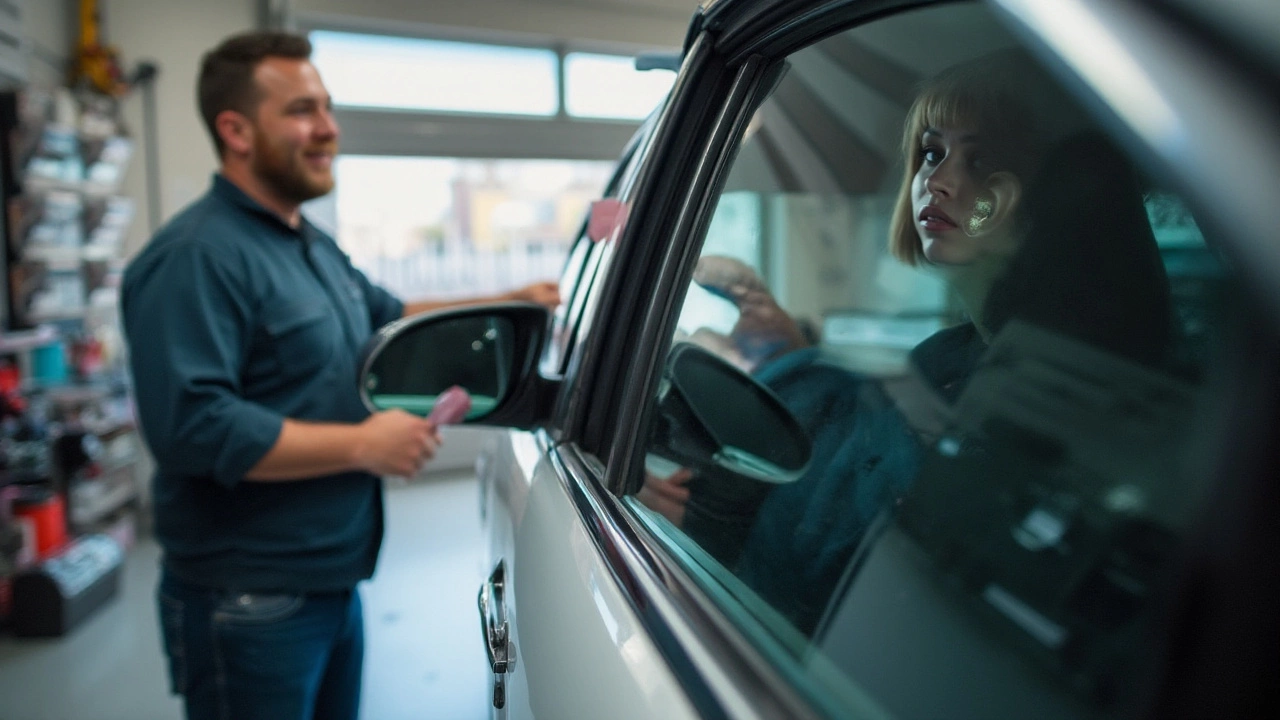
Why Tinting Laws Matter
Window tinting laws, especially those enforced in Texas, might seem overly cautious or even frustrating to some vehicle owners who enjoy the privacy and energy efficiency that darker tints offer. However, there are compelling reasons why these regulations are vital both for individual safety and public welfare. To start with, these laws are crucial in ensuring optimal visibility for drivers, which directly impacts road safety. Excessive tint on windows can drastically reduce a driver’s ability to see crucial environmental cues such as road signs, pedestrians, or other vehicles approaching under different light conditions. This becomes particularly pertinent at night when visibility is inherently lower. By setting legal limits, the state aims to strike a balance between practical tinting and the need for safety.
In addition, these legislative measures also play a significant role in aiding law enforcement agencies. Officers need to be able to see inside vehicles for their safety, a factor that becomes nearly impossible with windows that are too darkly tinted. There's an ongoing debate around whether allowing darker tints could compromise the tactical advantage that officers have during routine checks. A pertinent quote from an article in the Dallas Morning News succinctly captures this concern:
"Dark windows can create dangerous situations for officers approaching a vehicle during roadside checks, limiting their ability to swiftly assess potential threats."Thus, the tint laws help maintain a transparent environment where safety is mutual between the public and law enforcement patrols.
Moreover, complying with Texas tint laws ensures that you avoid steep fines and inconveniences that may arise during routine inspections. Tints that exceed the legal limits can lead to vehicle registration issues, as well as trouble passing annual safety inspections. Such regulations also encourage uniformity and fairness across drivers within the state, ensuring that everyone is held to the same legally mandated standard. While the intent might appear controlling, these laws primarily aim to provide a common ground so everyone can share the road responsibly.
| Limit | Texas Regulation |
|---|---|
| Front Side Windows | 25% Visible Light Transmission |
| Back Side Windows | No Limit |
| Windshield Tint | Strip above AS-1 Line |
The above table provides a brief overview of the legal limits for window tinting in Texas. The focus is often on maintaining a 25% visible light transmission for front side windows, which allows enough light through to maintain safe visibility while still offering the benefits of tinting. Interestingly enough, back side windows and rear windows are less restricted, providing car owners with opportunities to enhance privacy while staying within legal bounds. Knowing these specific regulations can prove invaluable, especially when considering new tints or making vehicle comparisons. By adhering to these guidelines, drivers can confidently enjoy the benefits of window tinting without the worry of legal repercussions or threats to safety.
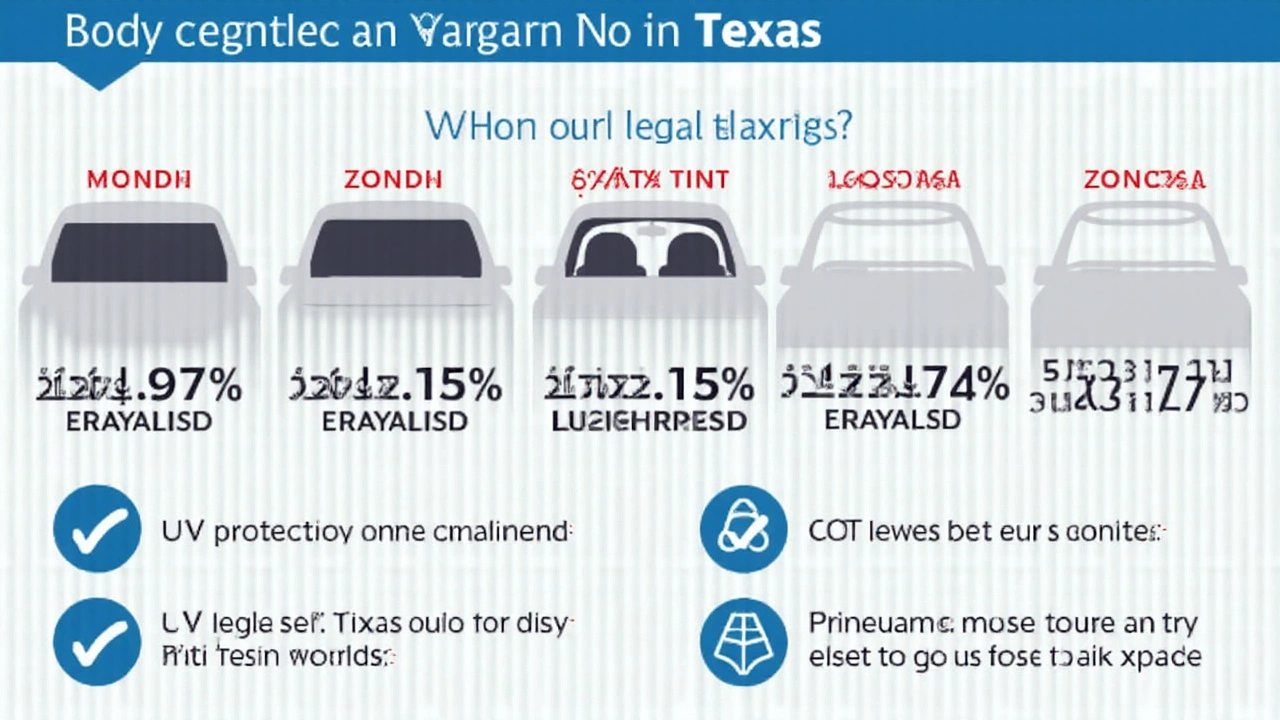
Choosing the Right Tint for Your Needs
Picking the right window tint for your vehicle in Texas is not just about remaining compliant with state laws; it’s also about enhancing your driving experience. With Texas's sunny disposition, having the ideal window tint can significantly contribute to comfort and convenience.
Firstly, understanding the legal limits is crucial. Texas law mandates that your front windshield can have a non-reflective tint on the top five inches, known as the AS-1 line, while the front side windows must allow more than 25% of light inside. This means you shouldn’t go darker than a high-quality film that maintains clarity and performs effectively under these limitations. It's a good balance between legality and functionality to ensure you don’t obstruct your view.
Window tinting serves more than just an aesthetic purpose; it brings substantial benefits, like reducing glare, offering privacy, and diminishing ultraviolet ray exposure. The right tint will protect the interior of your car, preserving its value while making it more comfortable to drive. When selecting your tint, consider both the level of privacy you desire and how much light reduction suits your driving needs. For those spending long hours on the road, higher quality tints that block out harmful rays while keeping the interior temperature down are ideal.
Cost is another factor when selecting the tint shade. The cheapest isn't often the best choice if you’re aiming for longevity and efficiency. Choosing a reputable installer who uses top-notch materials can save you money in the long run. For those who are environmentally conscious, explore eco-friendly tint materials that enhance fuel efficiency by cutting down on the need for air conditioning.
Besides personal preference, take into consideration suggestions from vehicle experts. According to an automotive specialist from Johns Hopkins University, “Selecting a window tint requires more than just picking a color. It involves understanding the impact on the driver’s safety and the car’s performance.” With parking in sunny spots being unavoidable in many Texas cities, opting for UV-reflecting tints is a smart move, ensuring upholstery doesn't fade and that temperature fluctuations are minimized.
Additionally, while aesthetic value matters, think about your car's specific needs. If you have a family vehicle, you might want to prioritize protection and comfort. In contrast, sports car owners might lean toward enhancing the car’s sleek appearance with a sophisticated tint. What's universally important though, is ensuring compliance to avoid fines and reduce risks while driving.
To summarize, choosing the right tint involves balancing compliance with practicality and personal preference. Given the diversity of tints available, tailor your choice to your specific wants and needs. And, remember the essential role window tinting plays in securing a more comfortable, protected, and enjoyable driving experience.
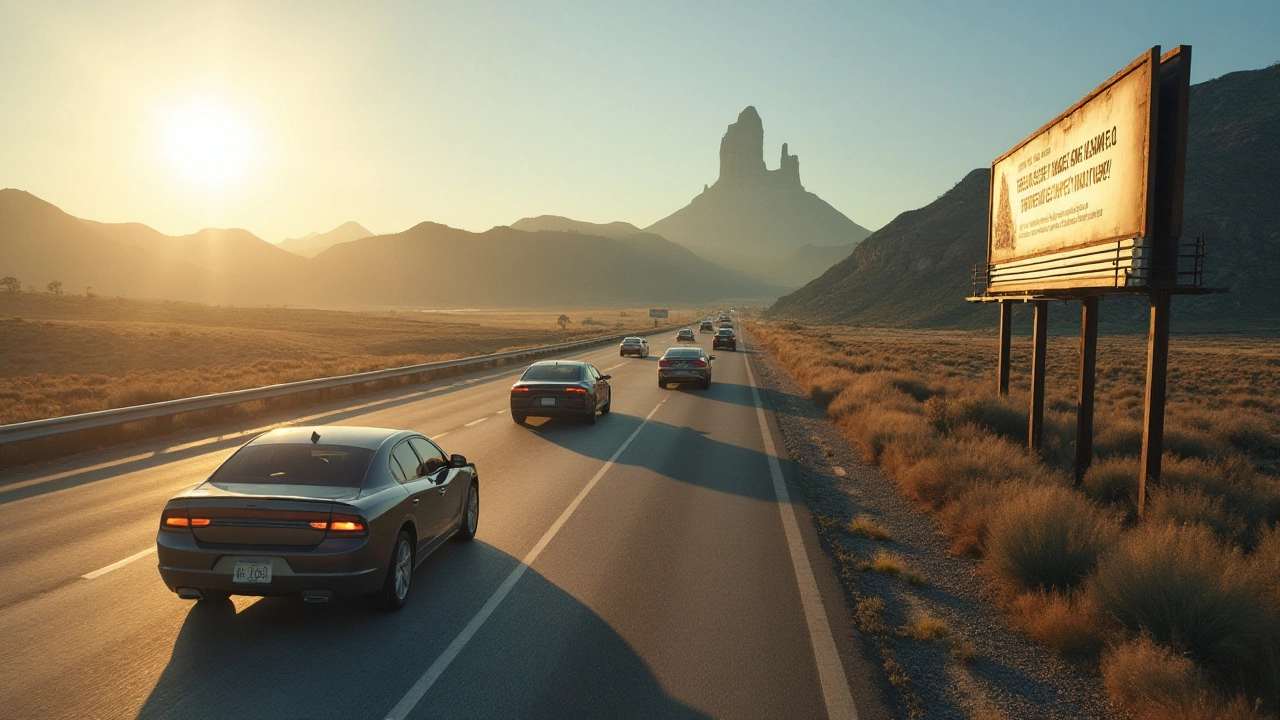
Tips for a Successful Tinting Experience
Embarking on a window tinting journey for your vehicle can feel a bit daunting, especially with the myriad of options and legal considerations involved. But fear not, with the right approach and knowledge, tinting can be a breeze. First, understand the importance of professional installation. While DIY kits may seem tempting for their cost-effectiveness, they often lack the quality and precision a seasoned expert offers. Professional installers have the skills to apply tint evenly across windows, preventing unsightly bubbles and creases that can mar the look and effectiveness of your tint.
Next, when choosing a window tint, don't just consider aesthetics. Opt for a tint film that provides adequate UV protection, heat rejection, and glare reduction. These factors significantly enhance comfort, especially driving under the intense Texas sun. Always verify that the tint you select complies with local Texas tint laws. Remember, even slight deviations from these regulations can lead to fines or mandatory removal. The darkest legal tint in Texas, for instance, allows for 25% visible light transmission on side windows, which is essential to know before making your decision.
Timing is also key in achieving the best results. Ideal weather conditions can facilitate better bonding of the tint film to your windows. Aim for a dry day, where humidity levels are low, ensuring quick and effective adhesion. Post-installation care is critical: refrain from cleaning the inside of your windows for a few days to allow the film to set properly. Avoid ammonia-based cleaners, as these can deteriorate the tint film, leading to discoloration and damage.
To get a feel for different tint options, it can be handy to assess vehicles you encounter on the road or speak to friends who've had successful tint installations. Gathering opinions and reviews can point you toward reputable service providers and help you avoid common pitfalls. Plus, by seeing the tints in action, you can better judge what suits your vehicle and preferences.
Before making a final decision, it might be worth checking in with local forums or car enthusiast groups. They often share tips, experiences, and even group discounts with trusted installers. As the famous auto detailer Andrew Layton once said,
"Investing in quality tinting not only protects your ride but enhances every drive, bringing comfort and safety into seamless harmony."His words reflect the sentiment shared by many professionals in the industry, underscoring the long-term value of well-executed tint jobs.
Consider your tint as not just an addition, but an enhancement to your vehicle. Wear and tear, road visibility, and personal security all benefit from a correctly chosen and professionally applied tint. Texas drivers particularly can rejoice in knowing that their rides are equipped to handle the sun's glare while staying stylish and within the law. With these tips in mind, you’re not just tinting your windows; you’re elevating your driving experience.

